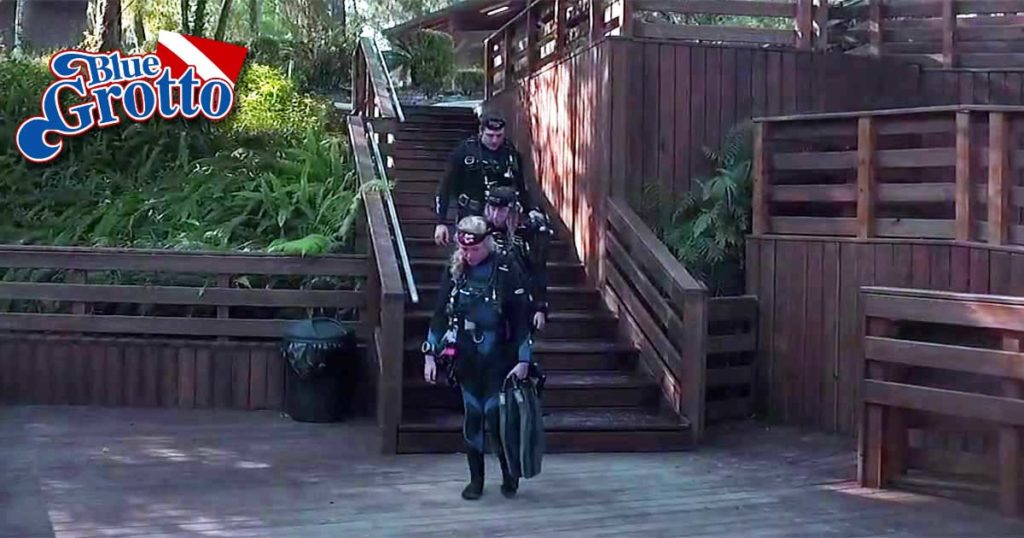If you have dived Blue Grotto, you are already familiar with the large, wooden stairs leading from the parking area to the deck overlooking the water. What you may remember is that the distance from the front to the back of each step is greater than what you are used to.
There is a reason for this. A reason that goes back nearly 60 years to the earliest days of the Grotto. At its heart is a series of hurricanes. And it’s a history worth knowling.
Filling a need
After Tom McQuarrie, Sr. purchased the land that became Blue Grotto in 1963, among the first things he had to do was create a safe way for divers to get from the parking lot to the water. A way that did not require mountaineering skills or slithering over rocks surrounded by poison ivy.
The spot he chose was the same location where the stairs are now. But there was a catch.
A season of storms
During the early 1960s, north-central Florida had been inundated by a series of hurricanes. As a result, water levels were well above what we’ve come to expect now.
You may have seen the Grotto when the water was knee-deep on top of the large deck that is usually well above the water. That’s nothing. In 1963, the water was 15 feet deeper than it is normally. This meant you entered the water at a point that would be halfway down the current stairs.
This complicated matters.
Pitch perfect?
When building stairs, one of the things you must consider is pitch. This is the angle of the stairs. It affects things such as the height of each step (riser) and the depth of each step (tread).
There is no standardized pitch for building stairs. Pitch angles will typically vary between 50 and 70 degrees. What’s important is that the pitch and, consequently, the riser and tread for each step be consistent from top to bottom.
This is where Tom ran into difficulty.
Dealing with the high water
Tom figured that the best way to build a safe, reliable set of stairs was to make them out of concrete. The catch is, you can’t easily pour concrete underwater. This meant Tom could only build his steps as far as the water’s edge — a point roughly halfway down the current stairs.
As water levels finally dropped, Tom was able to extend the stairs further. As he did, he was constrained by the slope and angle of the underlying rocks. This meant that the pitch would vary with each new section of stairs.
If you ever had to negotiate the original stairs, you remember what it was like. You had to watch each step carefully and hold onto the handrail for dear life.
“We can do better…”
When Dave Myler purchased the Grotto from its second owner, Ed Paradiso, it was with the intention of making several improvements to the Grotto’s infrastructure. These included a new bathhouse, new pavilions and the large wooden deck near the water. It also meant replacing Tom’s original concrete steps.
The catch was, it wasn’t practical (or even possible) to rip out the old steps and replace them with new ones. They needed to remain in place to provide a foundation for the new steps.
So the steps you see today lie directly on top of the ones Tom McQuarrie, Sr. built nearly 60 years ago. The only concession Dave had to make is that the new steps are at a slightly greater pitch angle than normal.
Appreciate the past
The next time you visit Blue Grotto, try to imagine two things. These are:
- The challenges Tom McQuarrie, Sr. faced when trying to build his stairs incrementally with limited resources.
- What it was like to hit the water halfway down the current stairs.
It will make you appreciate what we have now.
This is the second in a series of articles on the history of Blue Grotto. As before, we are indebted to Tom’s son, Tom McQuarrie, Jr., who documented these stories in Crystal River and Blue Grotto: The McQuarrie Chronicles. You can buy this book on Amazon using the link below.


